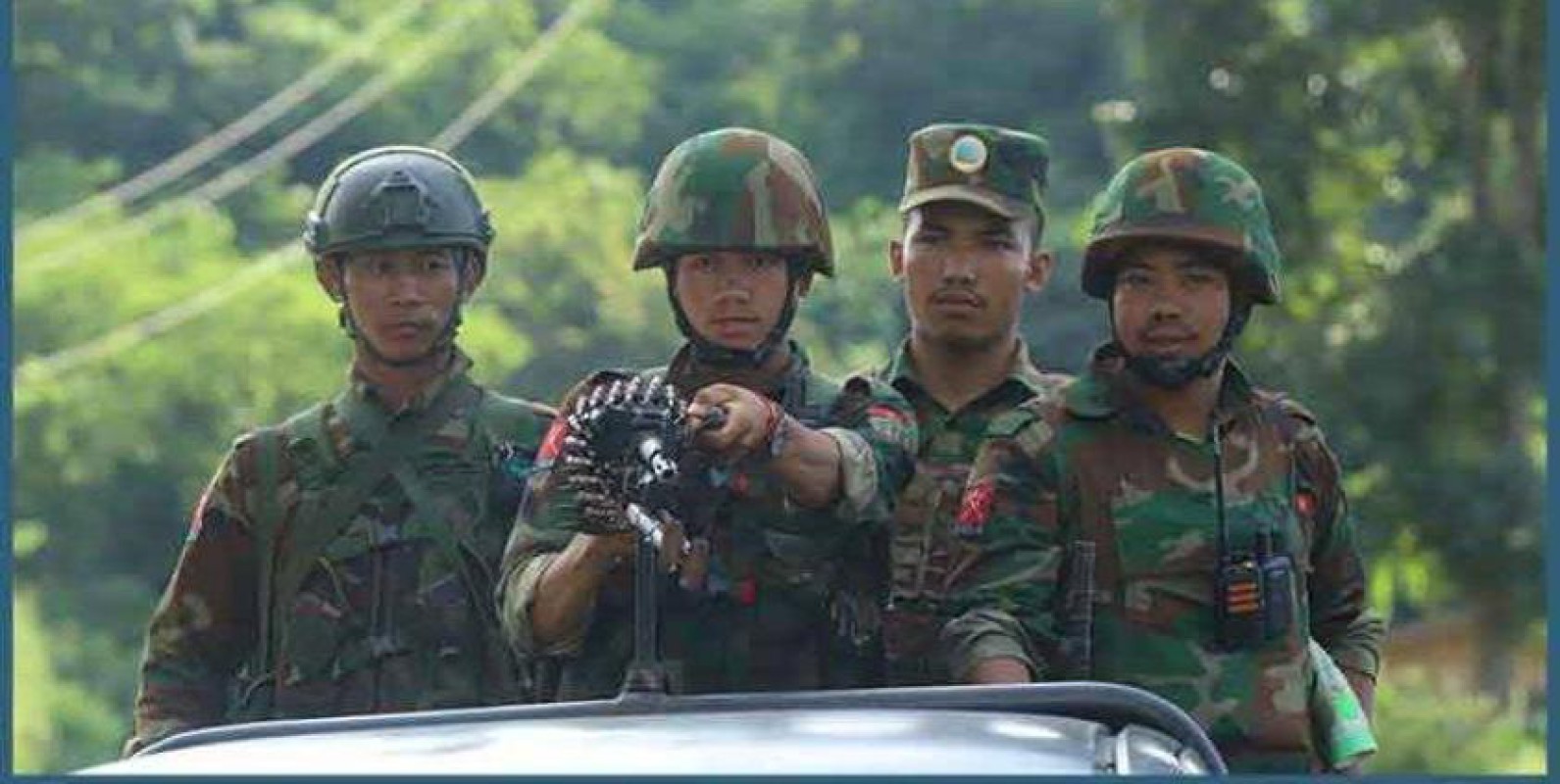TNLA ceasefire: path to peace or tactical pause?

564

Phyo Lin Aung (NP News)-Nov 10
After months of fierce clashes in northern Myanmar, the Ta’ang National Liberation Army (TNLA) and the Tatmadaw have reached what the TNLA describe as a ceasefire agreement. The truce, brokered by China’s Special Envoy for Asian Affairs, Mr. Deng Xijun, was finalized during the 9th round of peace talks held in Kunming, China, on October 27–28, 2025.
According to the TNLA’s official statement, the discussions attended by Lieutenant General Ko Ko Oo from the Tatmadaw and Lieutenant General Tar Jock Ja representing the TNLA’s political wing, the PSLF, produced a temporary ceasefire. The TNLA agreed to withdraw its troops from Mogok and Momeik townships within a defined timeframe, while the Tatmadaw committed to halting airstrikes and offensive operations in Ta’ang areas. According to the TNLA’s statement, both sides pledged to maintain their current positions starting October 29, with full TNLA withdrawal expected within 25 days from November 20.
While the announcement may appear to be a step toward ceasefire, skepticism abounds.
TNLA General Secretary Tar Phone Kyaw described the ceasefire as merely “a time for a break, a relax time for pressure, and a break time for recuperation” in a now-deleted social media post dated November 2. His words hinted that the agreement may serve more as a strategic pause than a genuine cessation of hostilities.
“The 1990s ceasefire was a playground where partners had to leave their own areas on a certain date,” he wrote, suggesting deep distrust of ceasefires that historically forced ethnic groups to surrender territory under the guise of peace. His statement underscored that the current move might be a tactical decision to regroup, rather than a sign of compromise.
The TNLA’s decision to withdraw comes after sustained military pressure from the Tatmadaw, which has gradually retaken strategic towns once captured by the TNLA and its allies under the “Operation 1027” offensive.
Over the past months, the Tatmadaw recaptured Nawnghkio (July 16), Kyaukme (October 1), and Hsipaw (October 17), key urban centers that had briefly fallen under TNLA control. Continuous airstrikes and ground offensives have eroded the TNLA’s battlefield momentum and depleted its ammunition reserves, forcing the group to consolidate its defenses.
Mogok, known worldwide as Myanmar’s “Ruby Land,” is more than a symbolic town. Its control means access to valuable gem and resource revenues, an essential source of funding for armed groups.
Although the People’s Defense Forces (PDFs), including the Mandalay PDF (MDY-PDF) initially fought alongside the TNLA in Mogok, the TNLA reportedly maintained full control of local governance and resource extraction. This arrangement alienated some PDF members, who believed they would share authority over Mogok after its capture.
As the TNLA withdraws, the MDY-PDF has vowed to defend Mogok, but analysts doubt their ability to do so alone. “The MDY-PDF, with a single unit, will never be able to withstand the Tatmadaw in any military operation,” said one military observer. Even if the TNLA leaves behind heavy weapons, local defense forces are seen as too weak and disorganized to hold the town against Tatmadaw offensives.
A military analyst familiar with the Mogok front noted, “The MDY-PDF with a single unit will never be able to withstand the Tatmadaw in any major operation. They are saying they can resist, but in reality, they are already packing their bags.”
Some local sources speculate that the TNLA’s “withdrawal” might be more cosmetic than real. Fighters could reportedly shed their TNLA uniforms and merge into PDF units, continuing guerrilla resistance under a different banner. This tactic would allow the TNLA to maintain a presence in Mogok’s lucrative gem mines while technically fulfilling the ceasefire’s withdrawal clause.
A source familiar with the region said, “Even if the TNLA says it will withdraw, it can easily re-enter in PDF uniforms. The background strength is still the Palaung. They can rest, regroup, and return whenever they are ready.”
At the time, the Tatmadaw continues to extend the state of emergency, most recently on October 31, to include 63 townships among them, Mogok and Momeik. This legal move effectively keeps the Tatmadaw’s full powers intact, casting further doubt on the sincerity of the ceasefire.
Given the TNLA’s internal communications, military analysts suggest that the ceasefire may be a tactical recalibration aimed at recovering strength, repositioning forces, and avoiding further losses under Tatmadaw air dominance. Once resupplied or reorganized, the TNLA could easily resume operations, especially if political negotiations stall or Tatmadaw offensives continue elsewhere.
While the TNLA–Tatmadaw ceasefire brings temporary relief to conflict-weary civilians in northern Shan State, it appears to be a pause rather than peace. Both sides remain deeply distrustful of one another, and the underlying political grievances; autonomy, resource control, and ethnic self-determination remain unresolved.
If history is any guide, Myanmar’s ceasefires often serve as short-lived truces, used by the ethnic armed groups to reposition, resupply, and recalibrate. Unless genuine political dialogue follows, this ceasefire risks becoming yet another sham agreement, destined to collapse once the insurgent groups regain the upper hand on the battlefield. –